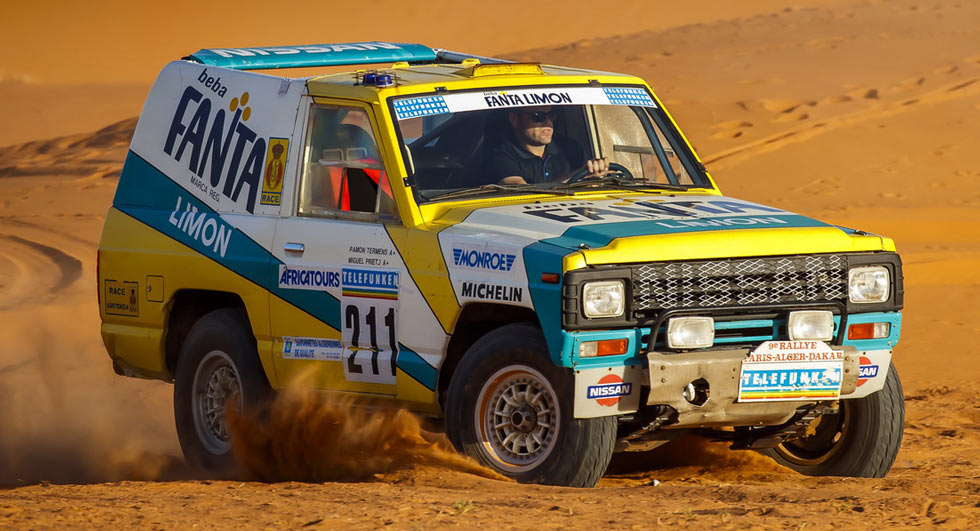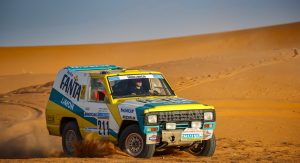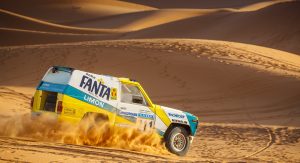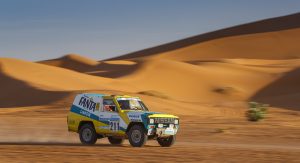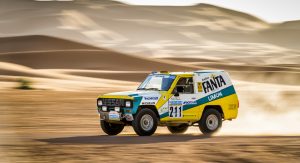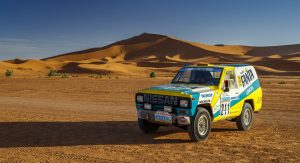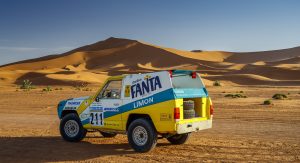Every year, Nissan puts a pot of money aside to bring old projects back to life as part of its ‘Performance Innovation’ program, with the latest model to benefit from this fund being the classic Patrol racer.
Tipping the scales at 1,600 kg (3,527 lbs) and powered by a 146hp 2.8-liter four-cylinder turbodiesel engine, the Nissan Patrol Fanta Limon’s main goal was competing in the challenging 1987 Paris-Dakar rally.
Lining up at the start line, among the 312 vehicles that were looking to finish the 13,000 km (8,078 miles) race through Europe, Algeria, Niger, Mali, Mauritania, and Senegal, Nissan entered two race cars with numbers 211 and 212 on their doors. Miguel Prieto and Ramon Termens were 211’s driver and co-driver, while the 212 was crewed by brothers Jorge and Hansi Babler.
Car 212 was forced to retire after their support truck broke down on the second stage, leaving it without spares for the rest of the race, but 211 battled on to the end and was the first diesel to finish, in a ninth place overall. But the crew responsible for taking it across the sand dunes knew what to expect, as they competed in the same lineup in the Raid Pharaons the year before where they finished first. Before that, Miguel Prieto teamed up with Xavier Juvanteny and Julio Vazquez, respectively, to challenge the 1986 Tunis Rally and 1986 Baja Aragon too, scoring another 4th and 3rd place.
After its main mission was accomplished, car 211 was offered to the Salvador Claret, a private car collection and automotive museum south of Girona, Spain, where it remained for almost three decades, when technicians at the Nissan European Technical Center (NTCE) in Barcelona spotted it in February 2014. Realizing that its 30th anniversary was due soon, they contacted the museum and got it back to restore it.
“The engine was in terrible condition. It was impossible to start and many parts were heavily corroded. The front axle was quite damaged, but the worst thing was the electrics, which had been badly attacked by rats“, said NTCE technician Juan Villegas. “We wanted the car to be accurate in every way, and were lucky to get the very old drawings and service manuals from NTCE. We followed all the fine adjustments to get the exact Paris-Dakar race set-up.“
Now, some two years later, the racer is complete and made a return to its spiritual home – the sand dunes of the Sahara.



